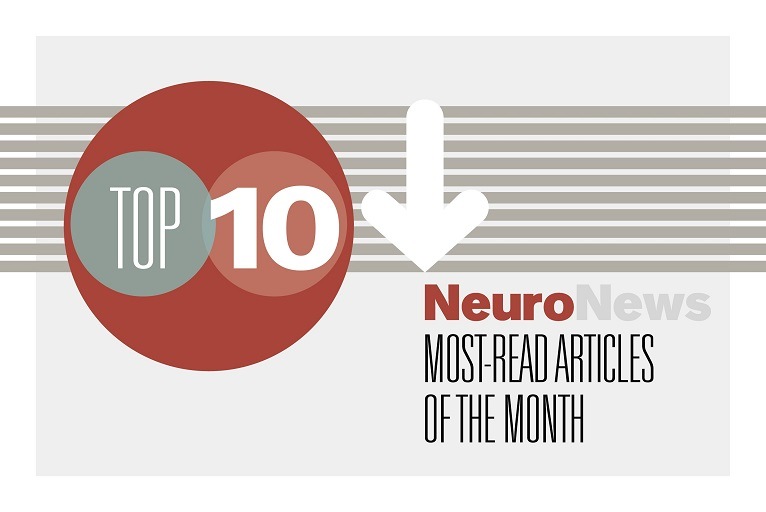 Highlights from the International Stroke Conference (ISC 2022; 9–11 February, New Orleans, USA)—predominantly relating to mechanical thrombectomy studies—grabbed our readers’ attention throughout February. New introductions to the stroke care field, including the Emboguard balloon guide catheter (Cerenovus) in acute ischaemic stroke, and the Comaneci embolisation assist technology (Rapid Medical) on the haemorrhagic stroke side of things, were also among NeuroNews’ most-viewed stories during the month.
Highlights from the International Stroke Conference (ISC 2022; 9–11 February, New Orleans, USA)—predominantly relating to mechanical thrombectomy studies—grabbed our readers’ attention throughout February. New introductions to the stroke care field, including the Emboguard balloon guide catheter (Cerenovus) in acute ischaemic stroke, and the Comaneci embolisation assist technology (Rapid Medical) on the haemorrhagic stroke side of things, were also among NeuroNews’ most-viewed stories during the month.
1. Mechanical thrombectomy shown to restore more function than medication alone following severe stroke
A new study from Japan has become the first randomised controlled trial to demonstrate the effectiveness of endovascular mechanical thrombectomy procedures in patients who have severe strokes involving clots in one or more large brain arteries. This preliminary, late-breaking research, which was presented at ISC 2022, found that patients who suffer a severe ischaemic stroke may regain far more function if their clots are mechanically removed in addition to standard medical therapy.
2. Global EXCELLENT study “shows how much stroke thrombectomy has advanced”
Mechanical removal of blood clots reduced post-stroke disability in nearly half of “all-comer” real-world stroke patients in a global study, according to preliminary late-breaking research presented at ISC 2022.
3. Researchers pave way for adaptive DBS treatment after identifying OCD-associated brain signals
In an effort to improve treatment for obsessive-compulsive disorder (OCD), a team of researchers has—for the first time, according to a Brown University (Providence, USA) announcement—recorded electrical signals in the human brain associated with fluctuations in OCD symptoms over an extended period while they went about their daily living at home.
4. Cerenovus launches Emboguard balloon guide catheter for acute ischaemic stroke
Cerenovus—a neurovascular firm that forms part of Johnson & Johnson Medical Devices Companies—has announced the launch of Emboguard, its next-generation balloon guide catheter to be used in endovascular procedures, including those for patients with acute ischaemic stroke.
5. Nevro announces publication of 12-month data on high-frequency SCS for non-surgical refractory back pain
Nevro Corporation has announced online publication of 12-month data from the SENZA-NSRBP randomised controlled trial in Journal of Neurosurgery: Spine. These data show that high-frequency 10kHz spinal cord stimulation (SCS) therapy results in profound improvements in non-surgical refractory back pain compared to conventional medical management, a company press release states.
6. Perfuze raises €22.5m in Series A funding for novel acute ischaemic stroke treatment
Perfuze announced that it has closed a €22.5 million Series A investment round—the proceeds from which will be used to drive the next stage of a US clinical study and regulatory clearance of its Millipede system. The funds will also be used to support ongoing development of new products and to initiate commercialisation of its technology.
7. RapidAI announces Karim Karti as new CEO
RapidAI has announced Karim Karti, former president and chief executive officer (CEO) of GE Healthcare Imaging, as the company’s CEO.
8. Imperative launches Zoom POD aspiration tubing for use in stroke treatments
Imperative Care has announced the launch of its Zoom POD aspiration tubing—the company’s latest innovation in elevating stroke care.
9. Vena balloon distal access catheter gains Health Canada medical device licence
Vena Medical has announced the first Health Canada medical device licence for its new product, the Vena balloon distal access catheter, which combines the balloon guide catheters and distal access catheters that are currently used in thrombectomy to remove clots from the brains of stroke patients.
10. Rapid Medical receives FDA Breakthrough Device designation for vasospasm treatment
Rapid Medical has announced US Food and Drug Administration (FDA) Breakthrough Device designation for its Comaneci embolisation assist technology, which is intended to facilitate the treatment of cerebral vasospasm—a major complication and cause of morbidity from subarachnoid haemorrhage—following a haemorrhagic stroke.











